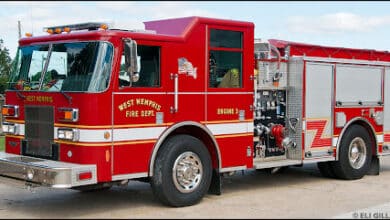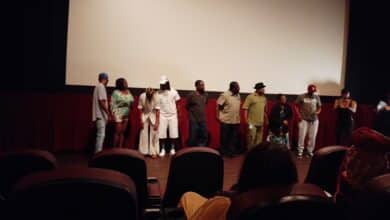Científicos de St. Jude utilizarán el imán más fuerte del mundo para investigación

St. Jude Scientists Using World’s Strongest Magnet for Research
MEMPHIS, TN (LPL/WMC /Memphis Business Journal) — El imán superconductor más fuerte del mundo está ahora en Memphis.
Bruker Corp. ha enviado el imán desde Suiza a los Estados Unidos, según la publicación Memphis Business Journal.
Con un peso de 10 toneladas y un costo de $10 millones, el espectrómetro de RMN permitirá la visión más clara posible de los detalles moleculares. Bruker dijo que la RMN de 1.1 GHz empuja “las fronteras en bioquímica, biología estructural y ciencia de materiales”.
Y explorar esos detalles podría resultar en descubrimientos clave al estudiar proteínas, ADN, ARN y otras biomoléculas.
“Este es el primero de su tipo en términos de obtener este instrumento de esta magnitud, este tamaño y esta fuerza”, dijo el Dr. Charalampos Kalodimos, presidente del Departamento de Biología Estructural de St. Jude. “Esto estuvo en proceso durante al menos siete años para llegar a este momento”.
Una vez que el espectrómetro de RMN se coloca en su lugar y se prueba, puede comenzar a usarse para investigaciones de alto nivel a nivel molecular.
“Podemos intentar ahora [responder] preguntas biológicas muy desafiantes [que] hasta ahora no hemos podido hacer”, dijo Kalodimos. “Podemos estudiar los complejos de proteínas que están involucrados en el cáncer y las enfermedades neurológicas y luego responder preguntas sobre lo que sale mal”.
Pero obtener el espectrómetro de RMN ha sido un proceso de muchos años y ha implicado la planificación del Centro de Espectroscopía de RMN, donde residirá, alrededor de imanes de un tamaño tan grande.
Según John Curran, director de diseño y construcción de St. Jude, el hospital ha estado planificando su llegada desde 2012. Se utilizaron metales no ferrosos en la construcción del centro que alberga los imanes.
Aún con una planificación avanzada, conseguir el último espectrómetro de RMN será muy ajustado. Curran dijo que los soportes de techo de acero inoxidable dejarán suficiente espacio libre para que se baje el imán, con algunas pulgadas de sobra.
El Centro de Espectroscopía de RMN se encuentra en el nivel inferior del Centro de Investigación y Atención de Kay, pero su techo está adyacente a las aceras exteriores y un área verde y tiene acceso al techo a nivel del suelo para instalaciones magnéticas.
Una vez que el espectrómetro de RMN se desconectó después de las pruebas en Zurich, el reloj comenzó a correr. Utiliza 6,000 litros de helio líquido para enfriar las bobinas de alambre en el centro del imán hasta casi el cero absoluto. El imán desconectado podría perder su campo estable después de un período prolongado de tiempo.
English:
MEMPHIS, TN (WMC/Memphis Business Journal) — The world’s strongest superconducting magnet is now in Memphis.
Bruker Corp. has shipped in the magnet from Switzerland to the United States, according to Memphis Business Journal.
Weighing 10 tons and costing $10 million, the NMR spectrometer will allow for the clearest possible view of molecular details. Bruker said the 1.1 GHz NMR pushes “the frontiers in biochemistry, structural biology, and material science.”
And, exploring those details could result in key discoveries when studying proteins, DNA, RNA, and other biomolecules.
“This is the first of its kind in terms of getting this instrument of this magnitude, this size, and this strength,” said Dr. Charalampos Kalodimos, chair of St. Jude’s Department of Structural Biology. “This was in the works for at least seven years to get to this moment.”
Once the NMR spectrometer is moved into place and is tested, it can begin to be used for high-level research on the molecular level.
“We can try now [to answer] very challenging biological questions [that] so far we haven’t been able to do,” Kalodimos said. “We can study protein complexes that are involved in cancer and neurological diseases and then answer questions about what goes wrong.”
But, getting the NMR spectrometer has been a years-long process and involved planning the NMR Spectroscopy Center — where it will reside — around magnets of such a large size.
According to John Curran, St. Jude’s director of design and construction, the hospital has been planning for its arrival since 2012. Non-ferrous metals were used in the construction of the center housing the magnets.
Still even with advanced planning, getting the latest NMR spectrometer in will be a tight fit. Curran said stainless steel roof supports will leave just enough clearance room for the magnet to be lowered in — with a few inches to spare.
The NMR Spectroscopy Center is in the lower level of the Kay Research and Care Center, but its roof is adjacent to outdoor sidewalks and a green area and has ground-level roof access for magnet installations.
Once the NMR spectrometer was disconnected after testing in Zurich, the clock began ticking. It uses 6,000 liters of liquid helium to cool the coils of wire at the center of the magnet to near absolute zero. The disconnected magnet could lose its stable field after an extended amount of time.





